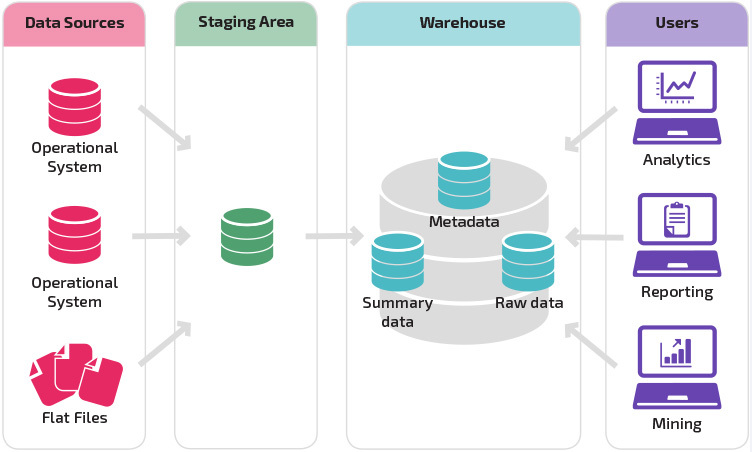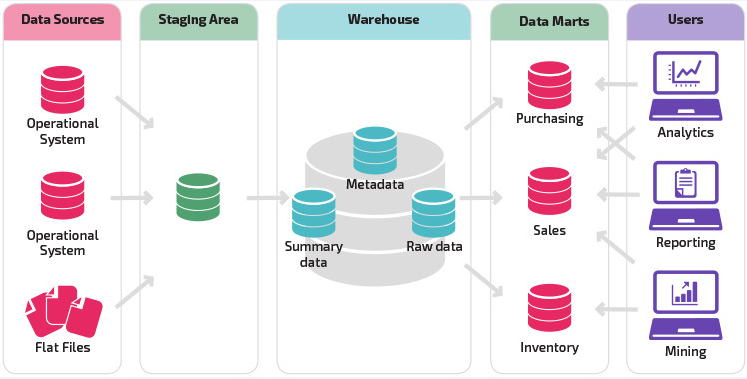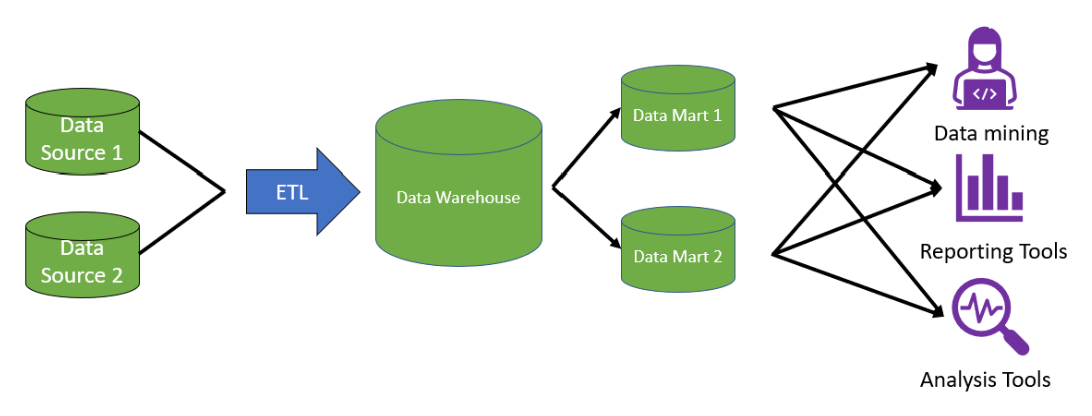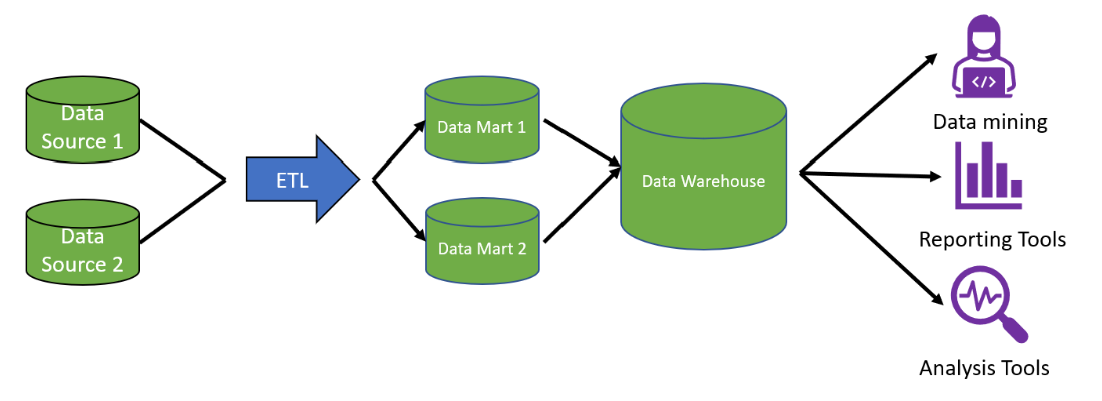Architecture
Overview
A data warehouse has multiple layers that handle different stages of the data process.
It allows users to access summarized data for analysis, reporting, and mining. The staging area transforms raw data from various sources into a structured format for easy querying.

Data marts are an extension of this structure. They store specialized data for specific departments, like finance, amd makes it easier for users to run tailored analyses.

Layers
Data Source
This layer holds all the data we collect.
- Data types: Files, databases, transactional systems.
- Example: Sales transactions or employee data.
Data Staging
Before data can go into the warehouse, it needs cleaning and organizing.
ETL Process:
- Extract: Pull data from sources.
- Transform: Clean the data, apply business rules, and do math (like averaging).
- Load: Put cleaned data into the next layer, in batches or all-at-once
Example: Extracting emails from raw customer support data and cleaning it up for the warehouse.
Data Storage
Here is where the data lives long-term.
- Data is stored in the warehouse or marts for analysis.
- Example: Cleaned data from staging is now in the warehouse or data marts.
Data Presentation
This is where users interact with the data.
- Users run queries and use BI tools to analyze the data.
- Use data mining tools.
- Create direct queries.
- Example: Power BI or Tableau connects to the data warehouse for reports.
Presentation Layer
User interactions fall into three categories:
| Category | Description |
|---|---|
| Automated Reports & Dashboards | Tools that generate reports and update dashboards automatically. |
| BI & Data Analytics | Tools for exploring data and finding patterns. |
| Direct Queries | Writing SQL or using programming tools for advanced analysis. |
Automated Reports & Dashboards
Data warehouses enable automated reporting and dashboards, which saves time and keeps organizations informed.
- Tools: Tableau, Power BI, Looker, SAP BW
- No coding needed, makes data accessible to non-technical users
- Analysts set up reports, which update automatically
BI & Data Analytics
These tools help users analyze data and find insights.
- Used to turn raw data into actionable information
- Some tools support drag-and-drop, while others allow coding
- Examples: Oracle Data Mining, RapidMiner, Alteryx, KNIME
Direct Queries
Users write queries to extract specific data from the warehouse.
- SQL is the main query language
- Tools: SQL Server Management Studio, Azure Data Studio
- R and Python offer advanced analysis and visualization
Data Warehouse Architectures
Data warehouses follow different architectures to store and manage data. Two common approaches are the top-down (Inmon) and bottom-up (Kimball) methods.
Top-Down (Inmon Approach)
Bill Inmon's method focuses on a centralized warehouse before creating department-specific data marts.
- Centralized data storage – Data is cleaned, defined, and standardized before entering the warehouse.
- Normalized structure – Data is stored efficiently, reducing redundancy.
- Departmental data marts – Data is later moved to specific business units for easier access.
Pros:
- Creates a single source of truth.
- Uses less storage due to normalization.
- Easier to expand by adding new data marts.
Cons:
- Slower reporting due to complex joins.
- High upfront effort to define and standardize data.

Bottom-Up (Kimball Approach)
Ralph Kimball's method focuses on quick access to data through department-based data marts before integrating them into a warehouse.
- Quick data access – Each department defines its data and builds data marts first.
- Denormalized star schema – Data is structured for fast querying.
- Incremental growth – The organization adds new departments over time.
Pros:
- Faster setup with lower initial costs.
- Easier for users to query data directly.
Cons:
- More storage needed due to duplicated data.
- Requires ongoing maintenance as more departments are added.
